The Habit Loop – How to Eliminate Bad Habits Before They Kill Your Career!
In this Month’s MasterClass, I’ll teach you about the Habit Loop and how you can use it to eliminate your Bad Habits before they kill your career!
Now I know our Star Wars fans might disagree :), but did you know that BAD is actually stronger than GOOD?
You might do 99% of your role fabulously but your bad habits, can dilute your efforts and kill your career/reputation.
Have you ever worked with someone who had bad habits that overrode their good efforts?
I’m sure we have all encountered this.
It’s much easier for us to spot bad habits in others than in ourselves.
People have puzzled over habits for centuries, but it is only in the past 2 decades that scientists and psychologists have understood how habits work and more importantly, how they change.
Watch the extract from a recent Great Managers MasterClass below to learn more.
Subscribe to the PODCAST of the Great Managers® MasterClass

[Video Transcript Below]
Welcome
Welcome to our Great Managers MasterClass on the secrets to eliminating your bad habits so they don’t kill your career!
And what I’m going to show you in this MasterClass will:
- Increase your knowledge and understanding of habits and how they contribute to your success, and this is not just at work, it’s in life as well.
- And it’s also going to give you some science-backed data about what works and what doesn’t in relation to habits.
- And some time-tested techniques to break bad habits and transform them into good ones.
Get ready to take some good notes because in this session today.
I’m going to cover three very useful things.
- First of all, it will be around the science around habits and how habits work so that you really understand them fully.
- We’ll talk about the kind of bad habits that kill the careers and reputations of managers, and I’ll be using a few different sources of research here around this, as well as the habits that will make you a star.
- We’ll also focus today on how to turn a bad habit into a good one in a way that sticks, so I’m going to give you a framework for understanding habits and how to create habits intentionally.
How Habits Form
Think of your brain like an onion.
Your brain is composed of layer upon layer of cells, and the outside layers, those closest to your scalp, are the more recent additions in terms of evolution. That’s where our most complex thinking occurs.
Deep inside the brain and closer to the brain stem, where the brain meets the spinal column, are the older, more primitive parts of the brain. Like the centre of an onion.
These parts of the brain control automatic behaviour such as breathing, swallowing and our startle response.
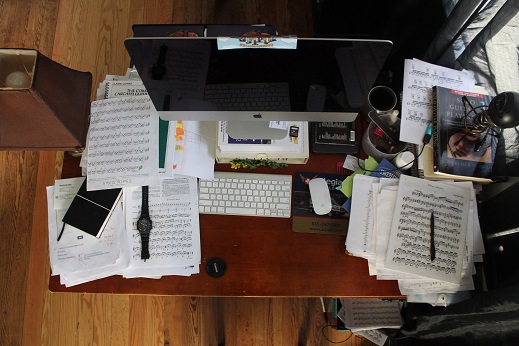
Common Bad Habit #322: Messy Desk.
Towards the centre of the brain, there’s a golf ball-size lump of tissue called the Basal Ganglia.
Scientists didn’t understand this very well at all until recently.
The Basal Ganglia’s role is recalling patterns and acting upon them.
So the Basal Ganglia stores your habits and then converts a sequence of actions into an automatic routine.
In turn, this frees up brainpower so you can do lots of things without much effort. It’s what we call an effort-saving instinct. It’s actually quite brilliant!
Charles Duhigg wrote a book called The Power of Habit. It sold over two million copies and he describes what’s called the Habit Loop.
Habit Loops
Habit Loops work like this:
- First, there’s a cue or a trigger that tells your brain to go into automatic mode and which habit to use
- Then there’s the routine, which can be physical, mental or emotional,
- Finally, there’s a reward, which helps your brain figure out if this particular loop is worth remembering for the future.
Over time, this Cue, Routine, Reward Habit Loop becomes more and more automatic, and the Cue and Reward become intertwined until a powerful sense of anticipation and craving starts to emerge.
Examples of Habit Loops
Lots of people love to run, and some talk about being addicted to it.
It becomes a habit and they have a craving for the endorphin rush that comes from the run or even that feeling of satisfaction.
Their Cue to go running could be seeing their running shoes. Then they begin their Routine. It might be a certain time of the day that they run.
They’ll get a Reward or accomplishment, in the form of winning a race or feeling a sense of achievement.
Here’s another example:
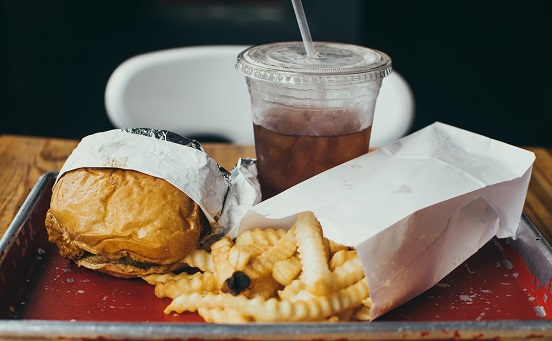 You might be alone at night, perhaps sitting on the couch where it’s comfortable and feeling a bit lonely perhaps
You might be alone at night, perhaps sitting on the couch where it’s comfortable and feeling a bit lonely perhaps
There’s a craving for something pleasant.
So you might snack on a pack of Doritos or something, and you get instant gratification.
The nice flavour in your mouth is the Reward.
We are all creatures of habit, but our habits are not our destiny.
This is an important point.
Habits can be ignored. They can be changed or replaced.
But once a habit is formed, the brain stops fully participating in decision-making. So changing a habit takes a bit of effort, and unless you can find new routines, the pattern will automatically unfold.
Simply understanding how habits work and learning the structure of the Habit Loop makes them easier for us to control.
The problem is your brain can’t tell the difference between good and Bad Habits.
Habits are always lurking there, waiting for the right Cues and Rewards.
For example, this is why it can be so hard to create exercise habits. Because as human beings, we like comfort, and once we’ve developed a routine of sitting on the couch, eating a bag of Doritos, well, our brain and habit system will work against us because we love the comfort, and we love that instant gratification.
However, once your new routine is established, it becomes as automatic as the old one.
How to Modify Bad Habits
To get started:
- You must decide to change the habit and believe you can change it. Think about one bad habit that you might want to change. It could be something that you’ve had feedback about from someone you trust.
- You must have some emotion associated with the change. You need to find the feeling because emotions provide the energy you need for the change. Focus on that emotion. What’s in it for you? What’s that thing that will drive the change for you?
Once you’ve decided to change and believe you can do it, then use your Self-Awareness to identify the Cues and Rewards. You must consciously accept the hard work of identifying the Cues and Rewards that drive the habit’s Routines. Only then can you find alternatives.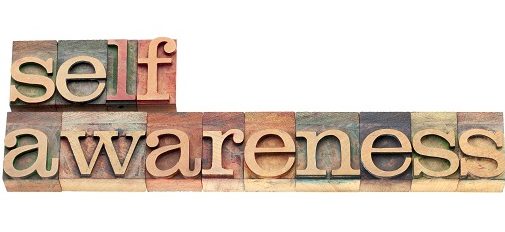
-
Identify the Routine
The routine is the most obvious aspect of most habits because it’s the behaviour you want to change.
-
Identify the Rewards
Find out what this habit gives you, and what you are craving for.
Rewards are powerful because they’re always satisfying a craving of some sort, but we’re often not conscious of the cravings that drive our behaviours.
This might take a few days or longer to identify.
Here are some examples of Rewards that we can all relate to…
Say you wanted to stop snacking at work. Say every afternoon at 3 or 4pm, you think, “I’ve got to have a snack.”
What could the craving be there? Are you actually hungry, or are you bored, or do you need a distraction?
Do you actually just need to stretch your legs because you’ve been sitting down for a while? Do you need to interact with others, or maybe you even want some fresh air?
Experiment with your own rewards by trying out different things. Perhaps go for a walk around the block or even talk with a colleague and see whether the craving for the food disappears.
Test different hypotheses to determine which craving is driving your routine, and by experimenting with different rewards, you can actually isolate what you are really craving, and that’s essential in redesigning the habit.
-
Identify the Cues
What’s triggering the behavior? Experiments have shown that all habits fall into one of five what we call Cue Categories:
1. Location – The habit is associated with a location. For example, the lounge room eating Doritos. Or it might be something else you do in a particular location.
2. Time – For example, do you eat breakfast at 7 am because you’re hungry? Or simply because it’s 7 am and that’s what you’re used to?
3. Emotional State – It could be an emotional state, a feeling that drives the particular behaviour. When people are anxious or tired, some people might eat more.4. Other people – Other people could be your cue. You might have friends that trigger certain habits in you and whenever you’re with them, there’s a craving to do a particular thing.
5. Immediately Preceding Action – Your cue might be the immediately preceding action. In the Great Managers Academy we learn about mindfulness and best way to make that a habit is to attach it to an existing habit. So often preceding actions will trigger something in us and our habits can be stitched into our environment as well as into our brain.
Shift Your Behaviour
Once you’ve figured out your Habit Loop, you can begin to shift the behaviour.
You can change to a better routine by planning for the cue and choosing a behaviour that delivers the reward you are craving.
When you want to change a behaviour, you need to be very specific.
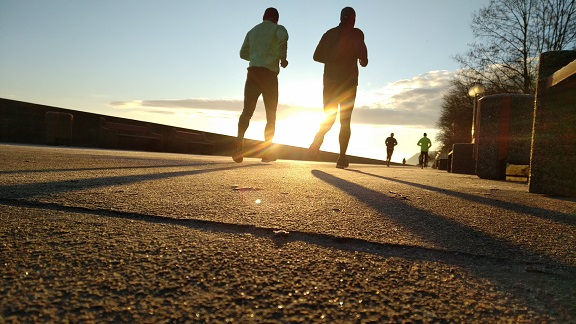 For example, if you want to get fit, it’s not enough saying to yourself, “I want to get fitter.”
For example, if you want to get fit, it’s not enough saying to yourself, “I want to get fitter.”
It’s about booking your exercise into your diary like a very important appointment.
Leaving your gym gear out the night before.
Exercising with a friend perhaps.
You are setting yourself up to succeed in an organised, planned way.
Making change happen with others in a supportive group helps enormously. A lot of our Great Managers Academy participants are doing their work together in a group because their odds of success go up dramatically when you commit to changing as a part of a group. Even just with two people, it makes a huge difference.
According to Charles Duhigg, you can keep the cue and reward but just insert a new routine. Then do it until it becomes a habit.
Because, remember, habits are things that allow us to do something with difficulty the first time, then with more and more ease and with sufficient practice, we do it automatically with hardly any effort at all!
Final Note
Changing Bad Habits might not be fast, and it isn’t always easy. But with time and effort, almost any habit can be reshaped.

Some habits might be more difficult to change than others. Particularly Bad Habits that have been around for a very long time. But this framework that I’ve just given you is a really good place to start.
It does require repeated experiments and possibly even some failures, but don’t give up.
Once you understand how a habit operates, and you diagnose the cue, the routine, and the reward, you gain power over it.
Now think about a habit that you would like to stop and commit to change by writing it in the comments section below.





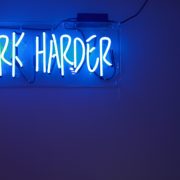





Comments are closed.